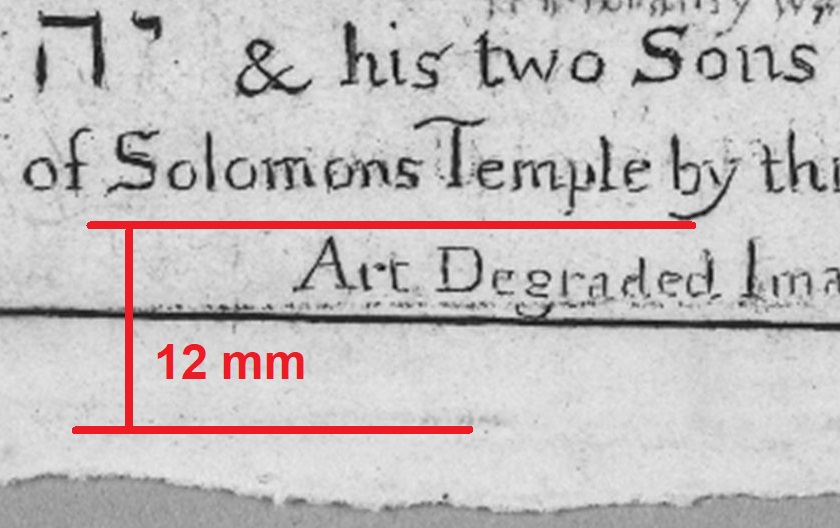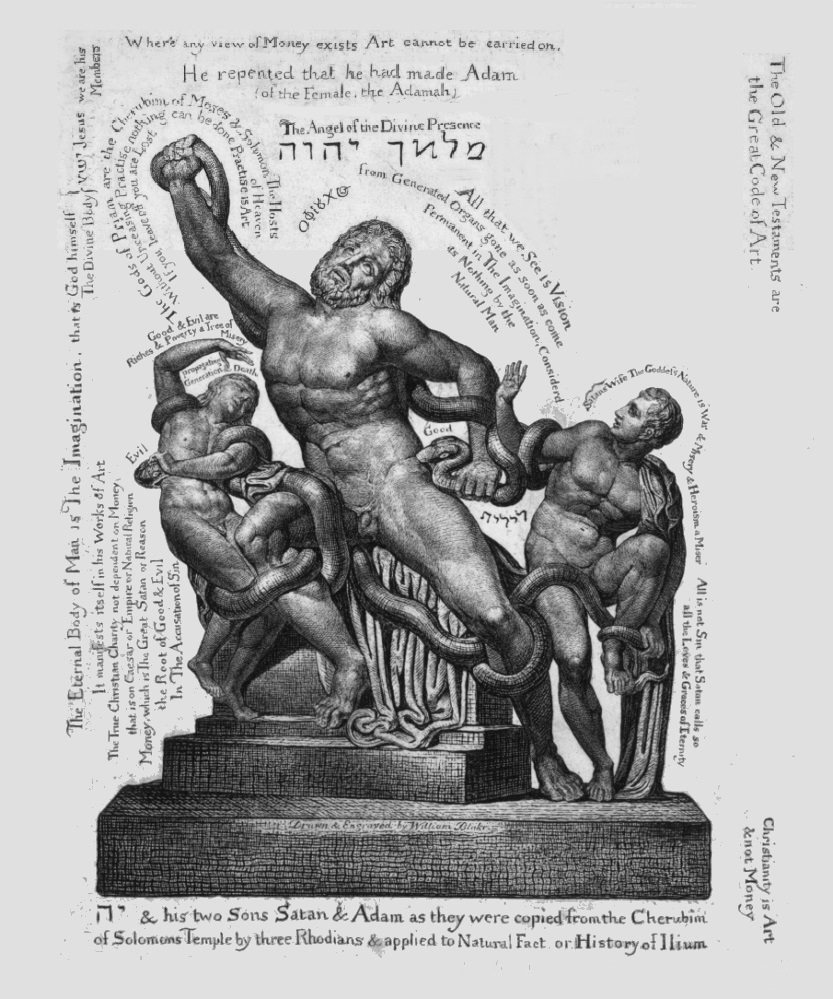William Blake's Laocoön: The Inscriptions
Part 4: A New Boundary
By this stage, Blake's inscriptions were expanding beyond the outline of the sculpture—he had too much to say to confine himself to its curves. Certain well-sized and well-spaced inscriptions, however, suggest that Blake began to envisage a new boundary for the inscriptions. Those inscriptions form a rectanglular frame aound the central statue. Blake was no longer thinking in terms of inscriptions wrapping around the contours of the central image: he was setting out a space to hold more of his ideas.
Blake first expanded the textual boundary, I believe, with the inscription "He repented that he had made Adam / (of the Female, the Adamah)". The line sits just above the inscriptions around Laocoön's upthrust arm and is roughly centred, though pulling slightly to the left—as through under the control of Laocoön's arm. Although perhaps not resulting in an especially elegantly arrangement, figure 4a shows that the space left by this composition does not suggest that anything is missing.

Blake, though, was not finished. "Where any view of Money exists Art cannot be carried on" expands the outer limits of the text upwards to what would have suggested a natural limit at this stage: the distance between it and the top edge of the copperplate is approximately the same as that between the inscription concerning "יה & his two Sons" and the bottom edge (both around 12mm; see figures 4b and 4c).


Continuing this pattern, "The Eternal Body of Man is The Imagination expands the textual border to the left (with a similar distance from the edge of the copperplate). At some point afterwards, the line was extended by the inscription "that is God himself / The Divine Body} "ישע Jesus". Blake probably added the words "we are / his Members" later. That they were not originally planned as part of the line is evident in the way in which Blake has to cut the phrase to make it fit comfortably within not just the border but even the copperplate itself (figure 4d).

The space between "The Eternal Body of Man [. . .]" and "The True Christian Charity not dependent on Money [. . .]" must shortly have been filled by the intermediate line "It manifests itself in his Works of Art". The parenthesised phrases "(In Eternity All is Vision)" and "(the lifes blood of Poor Families)" may well have been added separately, to fill up the remaining spaces, once Blake had begun to realise how dense the engraving was becoming elsewhere.
The order of the inscriptions down the right-hand side of the plate is also indicated by the distance of the other inscriptions from the statue and edges of the paper/plate. Two inscriptions, in line with each other, fit the pattern established above: "The Old & New Testaments are / the Great Code of Art", which starts roughly in line with "He repented that he had made Adam"; and "Christianity is Art / & not Money", at the bottom of the plate, finishing roughly in line with "the History of Ilium". The extended outer limits of the engraving can be seen in figure 4e.
It is unclear if Blake added the border to his engraving before or after he added these inscriptions—that is, it is unclear whether they respond to the placement of the border or if the border was placed in relation to them. These inscriptions and the border, however, were certainly added at about the same time, before many of the inscriptions that fill up the areas between and within them.



